Yazidis in Armenia. The Yazidis have been in the news for all of the wrong reasons over the past several years. The Yazidis practice their own unique religion and caught the ire of ISIS. Yazidis are spread throughout the world numbering 1.5 million, but the highest concentration can be found in northern Iraq. ISIS was intent on decimating the Yazidis population through a series of killings, kidnappings, forced conversions, slavery, and expulsions.
The Yazidis have had better success in Armenia where they comprise the second largest ethnic group. That is not saying too much, since there are only approximately 35,000 Yazidis in this former Soviet Union republic. Armenia is hyper-homogeneous with over 98% being ethnic Armenian. The Yazidis make their homes across 19 different villages, and they are free to speak their own language, practice their own religion, and attend Yazidi schools.
The Yazidis follow one God, making them monotheists. Their God created the world and then assigned a Heptad (fancy word for seven) of Holy Beings (Angels) to oversee life on earth. The preeminent of the seven is Melek Taus, known as the Peacock Angel, who hands out blessings and misfortunes upon mankind. Muslims have accused the Yazidis of satanic worship, believing that Melek Taus is a devil. This belief has sometimes been the cause of the Yazidis’ persecution.
After visiting the intriguing Assyrian neighborhood (read about our visit here), my friend Aspet suggested we do a visit to the Yazidi populated village of Aknalich, an hour ride from the capital of Yerevan. We wanted to visit the largest Yazidi Temple in the world. Yes, in Armenia. The second largest Yazidi temple is located in Lalesh in Kurdistan (Iraq). All Yazidis are encouraged to visit at least once on a pilgrimage.

Over some bumpy roads with the heat rising, we arrived at the village. Unlike other well-known monasteries in Armenia, there was no tourists here. In fact, the only people at the temple were a handful construction workers scurrying around the temple. The seventy-five-foot temple is known as Quba Mere Diwane. The temple is constructed from Armenian granite and marble imported from Iran, Armenia’s southern neighbor.
There is an expansive courtyard with a series of statues and monuments. Aspet and I noted the Armenian and Yazidi historical figures. A soon to be monument will be placed in memory of the Yazidi Genocide in Sinjar in 2014. Sinjar is located in Northern Iraq in Kurdistan.

Khachatur Abovyan, an Armenian writer and poet, praising the Yazidis. He was a patron and friend of Yazidis in Armenia.

This is Jangir Agha (c. 1874–1943), who was a prominent military and social figure in Armenia and a national hero of the Yazidi people. Jangir Agha participated in the Battle of Bash-Aparan with his 300 horsemen Yazidi battalion against the Turkish Army, which had invaded Armenia. In 1938 he was repressed by the Stalin regime and imprisoned at the Saratov prison, where he died. In 1959, Agha was posthumously rehabilitated .
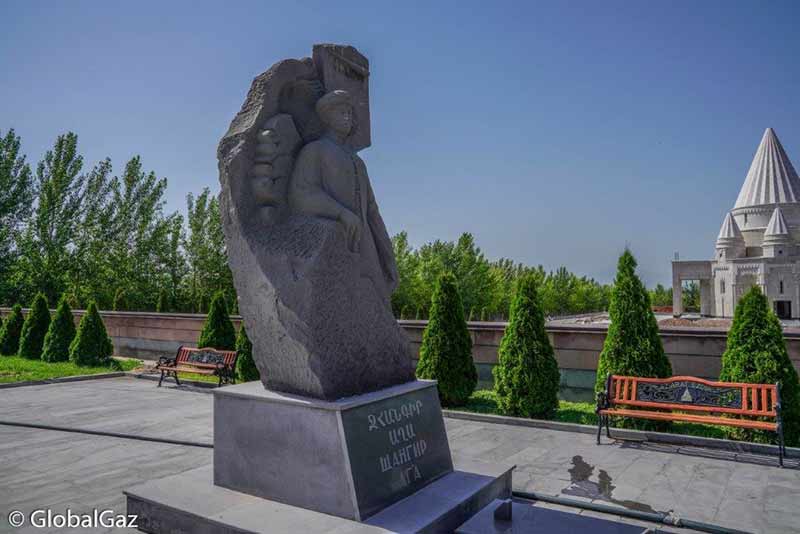
If you have been to Yerevan, you recognize this style of park bench. This is the Yazidi version.
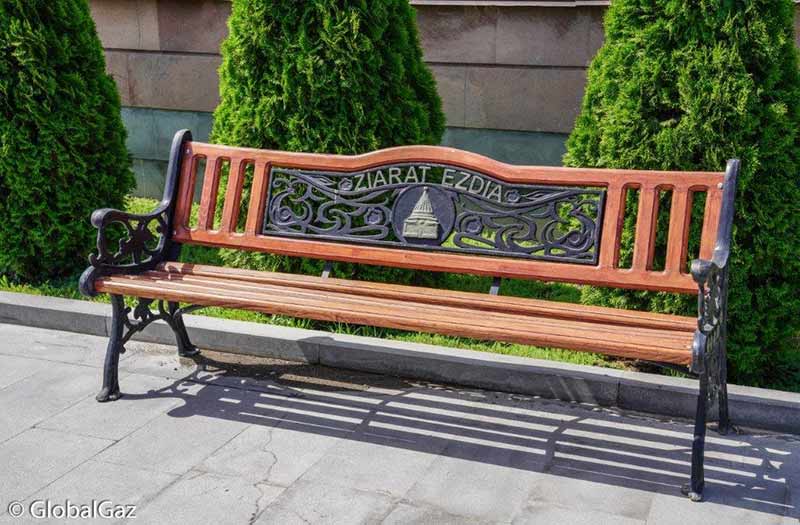
We approached the white stone domed temple with seven surrounding smaller domes. We circled and admired the temple.
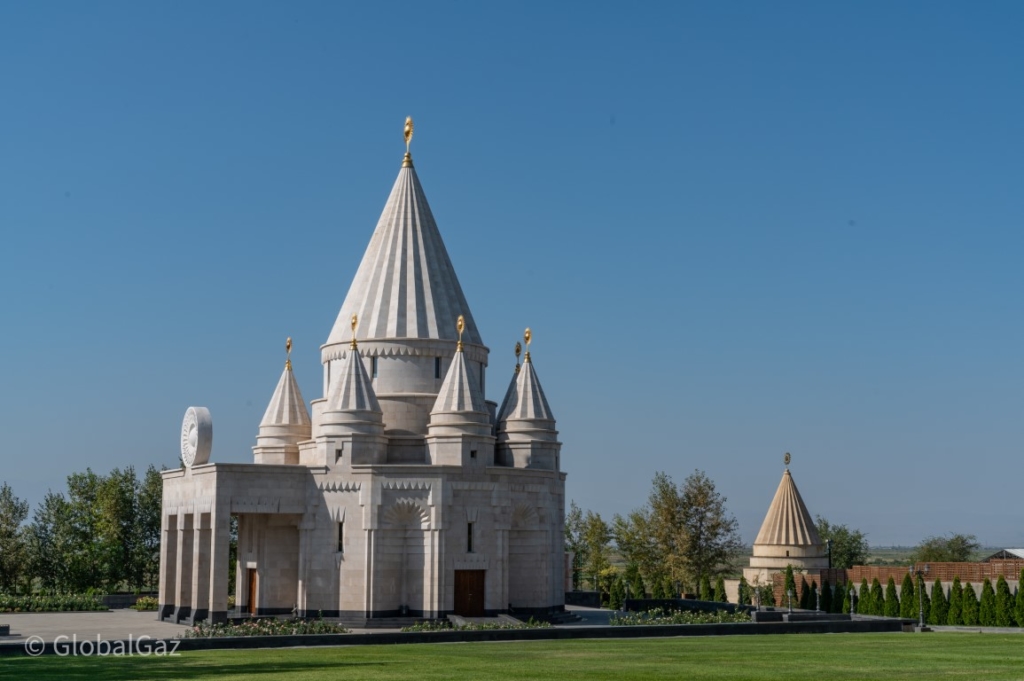
Then we entered the empty interior of temple. The temple is sparse but elegantly designed. This temple is funded by Mirza Sloian, a Yazidi businessman based in Moscow.
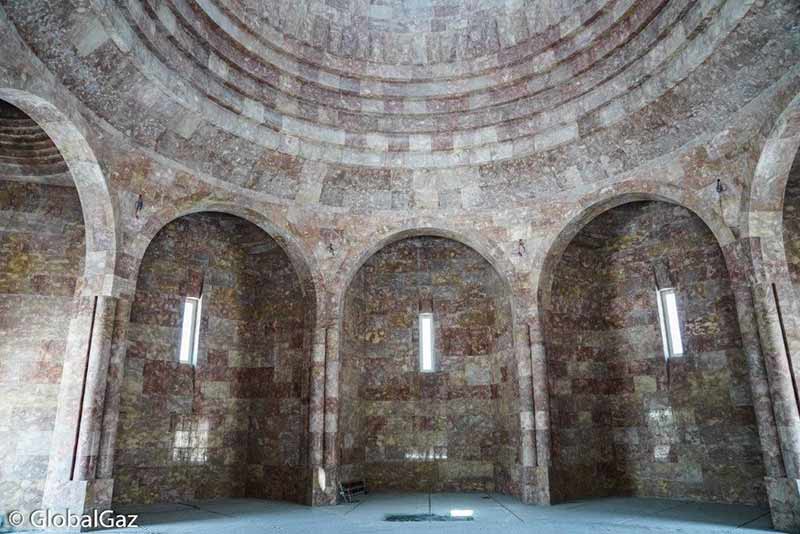
The temple is being built in Aknalich, about 35km from Yerevan, the Armenian capital. Seven domes will surround a central arched roof, crowned with a gold-plated sun. At 25m high, it will be built from Armenian granite and Iranian marble and house a 200-square-metre prayer hall.
And here is a look at the altar. Note the prominent role the peacock plays.
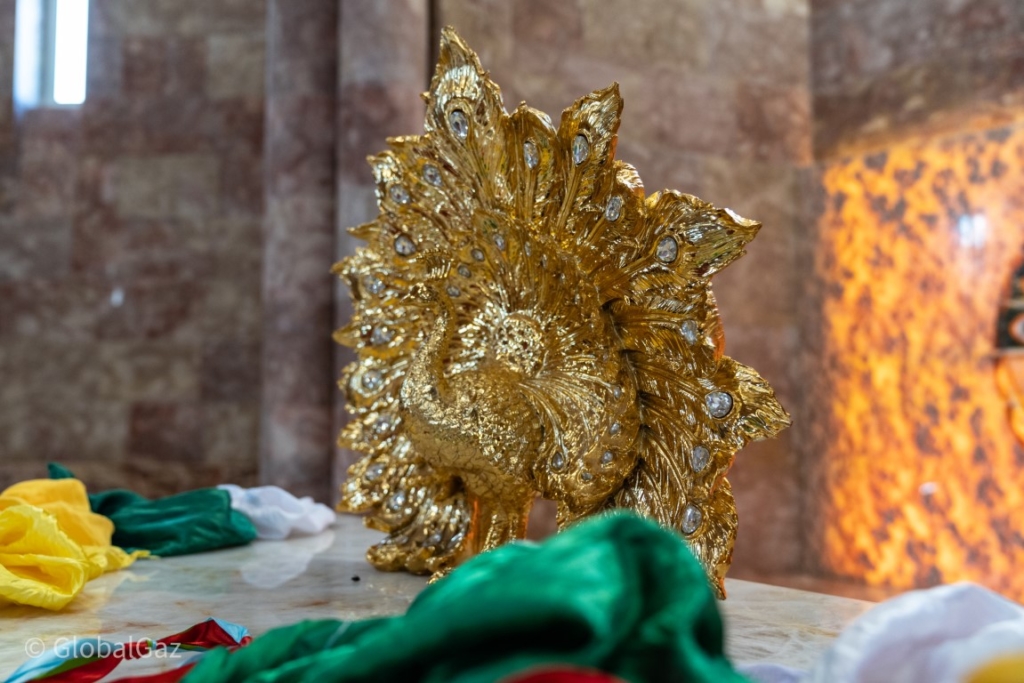
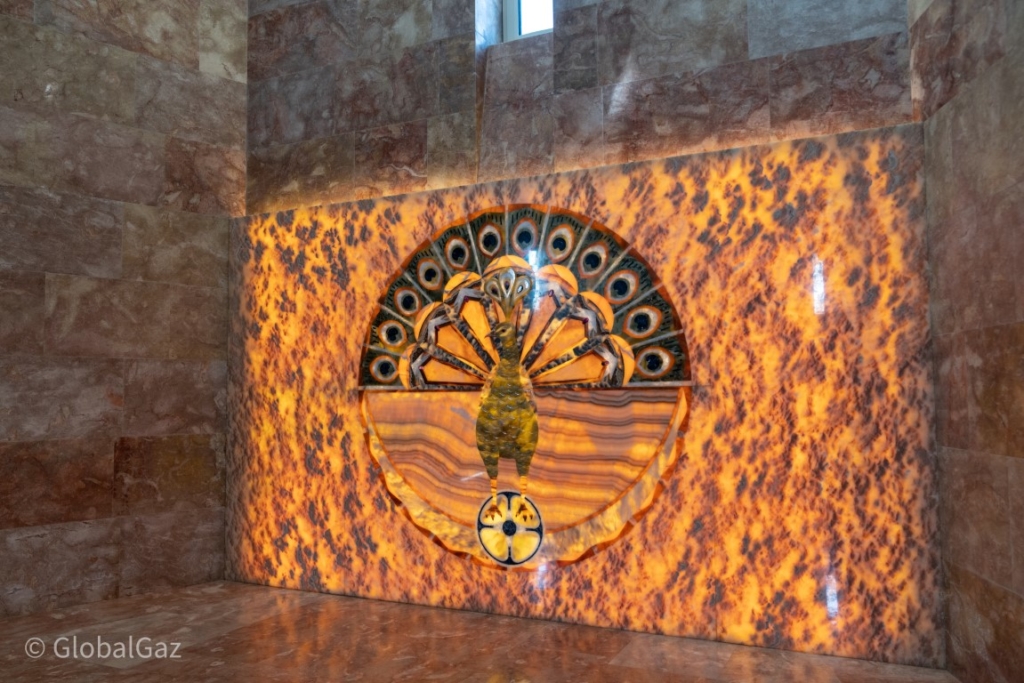
Next to the temple, is a smaller more compact temple called Ziarat. This temple was constructed in 2012 and holds approximately 30 people. It was the first temple built outside of the Yazidi homeland in Lalish.
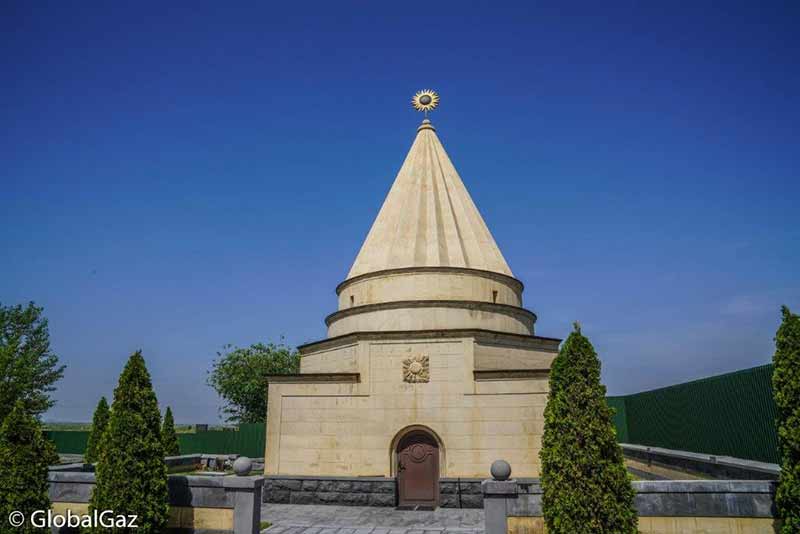
A small altar sits in the middle. I noted two peacock figures.
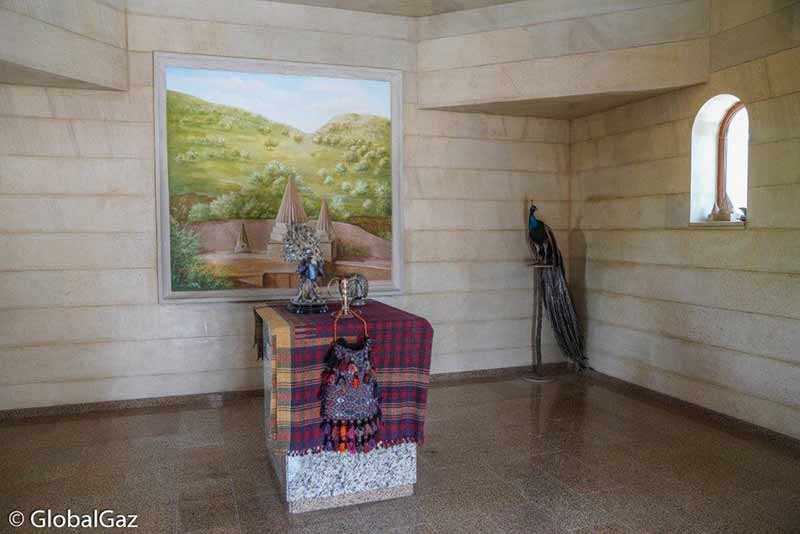
Behind the smaller temple was a Yazidi cemetery.
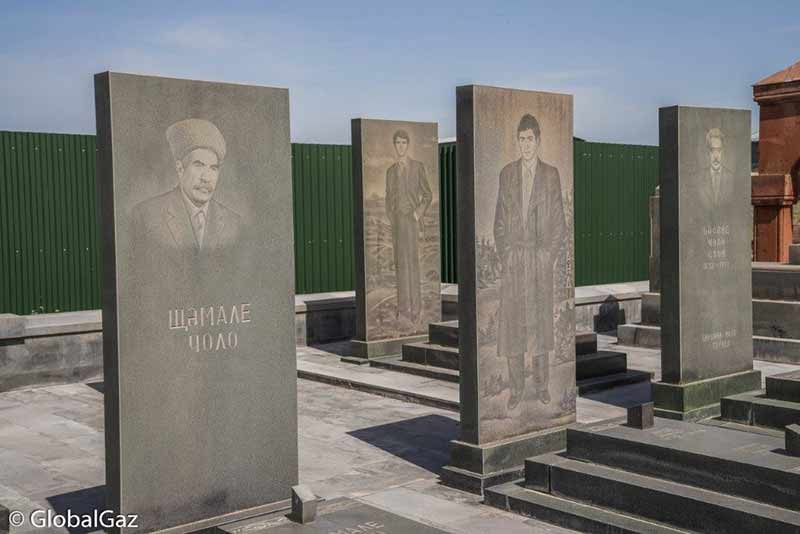

Aspet and I decided to double down and visit another Yazidi village, known as Ferik, named after the Yazidi Bolshevik poet, Ferik Polatbekov. After navigating dirt roads, we arrived. In the shadow of both Mt. Ararat and Armenia’s nuclear power, we discovered a quiet but large cemetery.
Not sure why, but these two men are quite taken with water fountains.
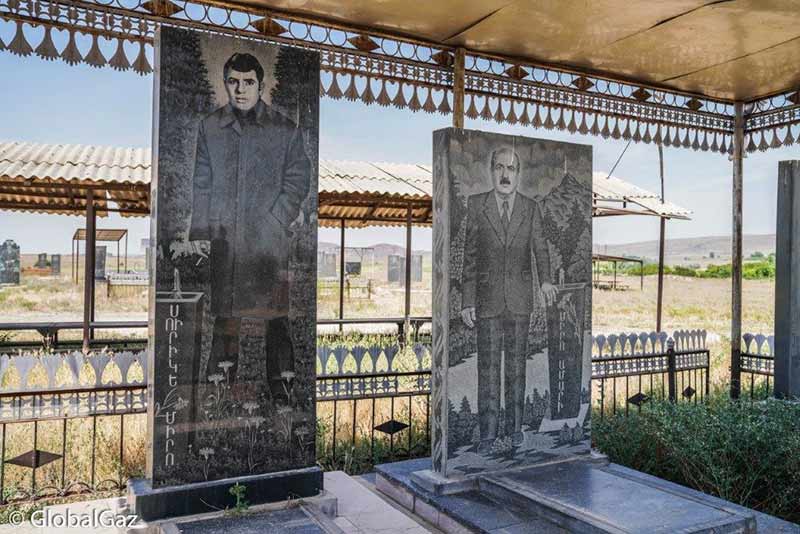
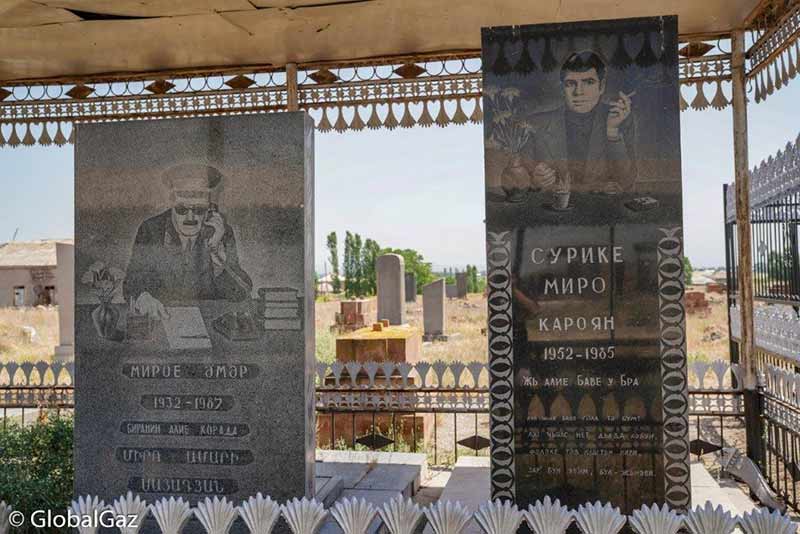
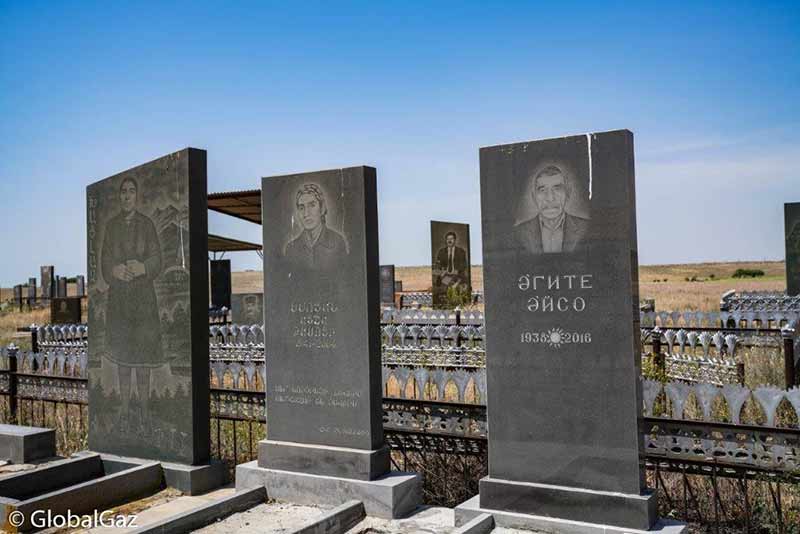
Metsamor nuclear power plant stands sentry in the background.
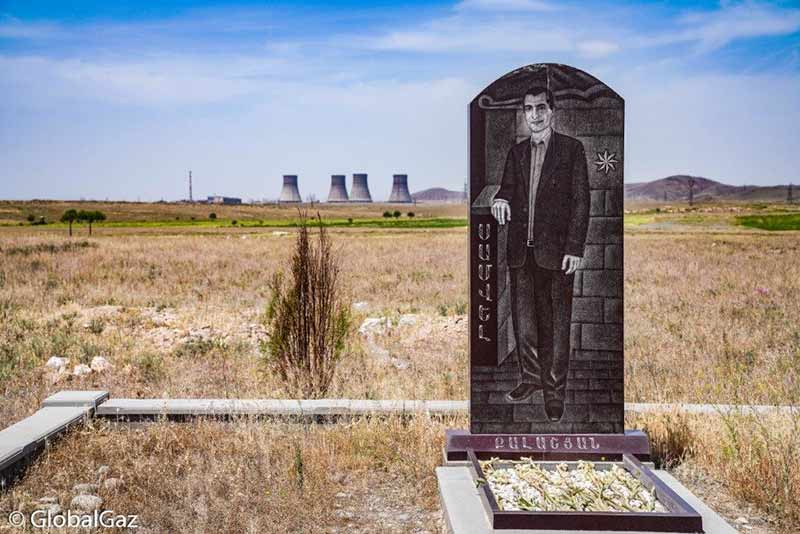
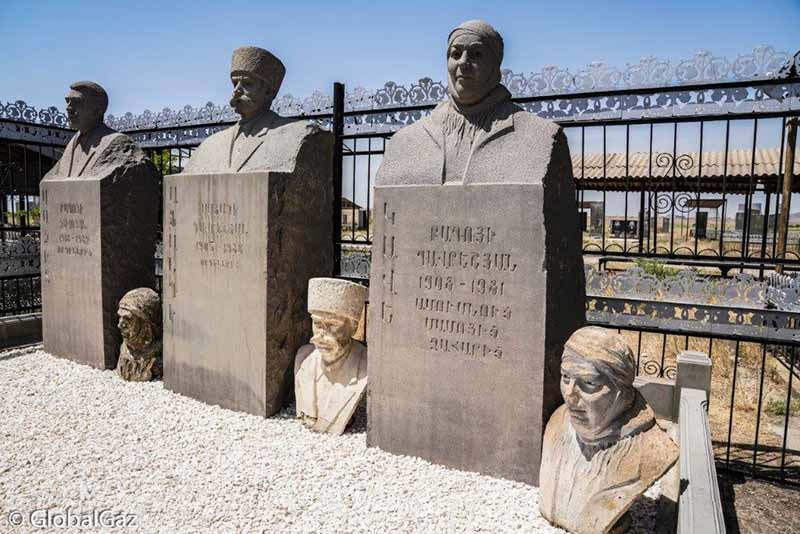
Yazidis in Armenia. And check out Yerevan Free Walking Tours to learn about the capital.
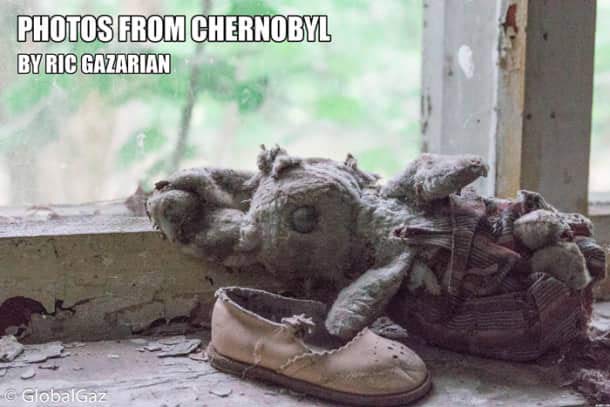
Photos From Chernobyl
Sign up to receive your free copy of Photos From Chernobyl. Over 100 photos from the Chernobyl Exclusion Zone.

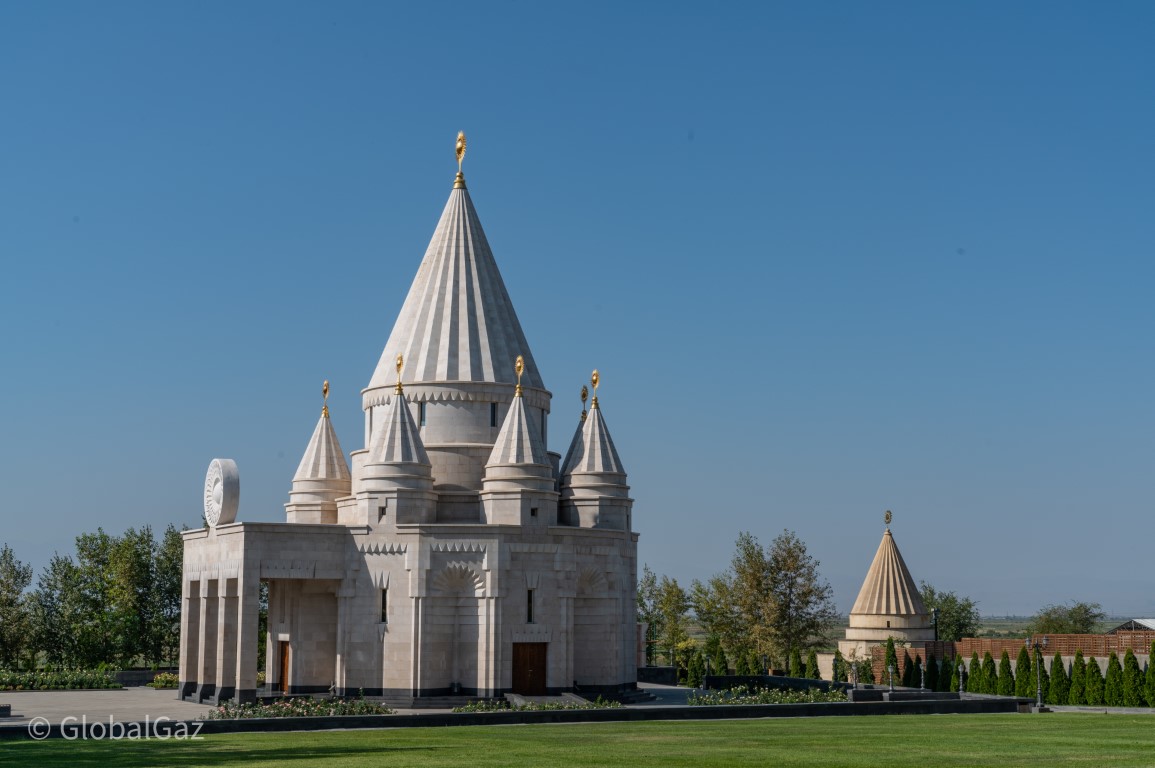
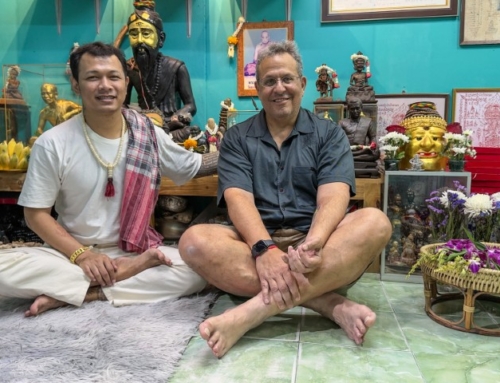
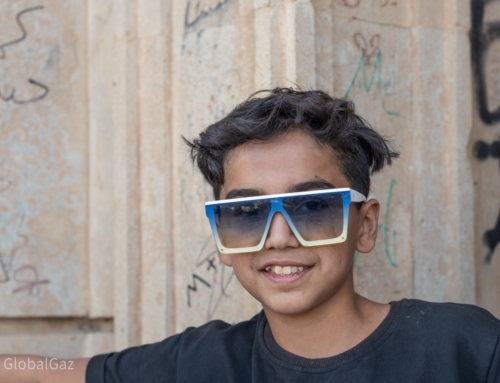
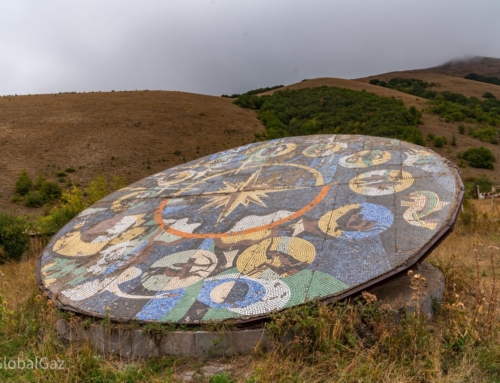
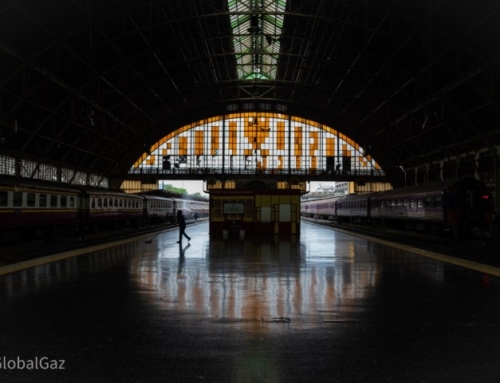
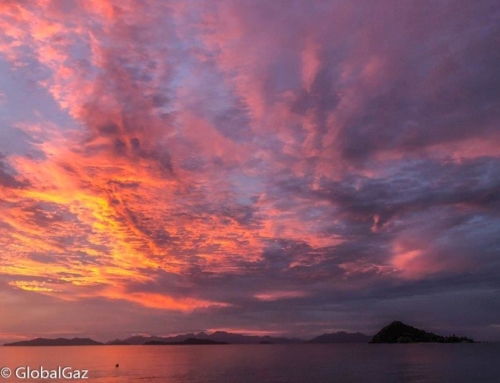
[…] And before you leave check out the Yazidis of Armenia. […]
[…] sure you check out these other amazing posts on Armenia: The Yazidis of Armenia and The Assyrians of […]
[…] every year since 2003. And am already looking forward to next year’s visit. I spent some time in Yerevan, the capital, participating in an art exhibition showcasing some of my photos. I then rented a car […]
[…] sure you check out my other adventures … the Yazadis in Armenia and the Assyrians of […]
[…] Learn about the Yazidis of Armenia. […]